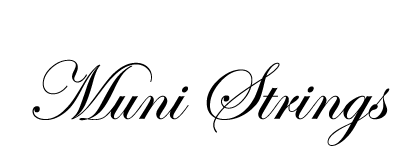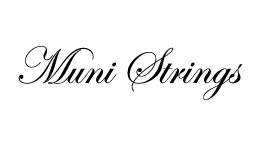It is that time of year again. Time to start talking about back-to-school and all it entails. For parents of first-time string players this means entering a whole new sphere – the string world. Trying to navigate an entangling web of information and misinformation can be confusing and frustrating. This guide is meant to provide answers to some of the questions everyone has asked (or will ask) about getting started as a first-time string parent.
My Student Picked Orchestra, Now What?
First, congratulate your student for making the right decision! Next you need to figure out which stringed instrument your student wants to play:
- Violin – The highest pitch and most well-known of the string family. It often has the melody and is usually the focal point of orchestral arrangements. It reads in treble clef and has the tuning pitches of E-A-D-G. Violin is by far the most common stringed instrument to start on in part because the knowledge is easily transferred to the other instruments.
- Viola – The alto voice and least known instrument of the string family. Viola parts are usually supportive of the violin part and in the background of an orchestral arrangement. It is one of the few instruments that uses alto clef and the tuning pitches are A-D-G-C. The top three pitches are exactly the same as violin (A-D-G) but if played together the viola can be differentiated by a deeper and more mellow sound.
- Cello – The lowest pitch of the string quartet family and most easily recognized by the sitting position while playing. The cello is one octave lower pitched than the violin and viola with the exact same tuning pitches as the viola, A-D-G-C. It reads in bass clef and while it does primarily play supportive roles in orchestral arrangements, it is also featured in many pieces.
Instrument Has Been Chosen, What Next?
Next you need to figure out what size instrument your student needs. First ask the teacher to size your student. If that is not an option, find a store that is able to size (this should always be a free service).
Violin and viola sizes are determined by the player’s arm length and hand size. Cello sizes are determined by height and hand size. The player must be present for the sizing. It is not reliable to size based on age, grade or other measurements.
Violin and cello sizes are listed in fractions while viola sizes are listed in inches.
- Violin Sizes listed from biggest to smallest are: 4/4; 3/4; 1/2; 1/4; 1/8; 1/10; 1/16; and 1/32 with the biggest size referred to as “full-size.” Any size smaller than 4/4 is considered “small size” or “fractional size.” The appropriate size is determined by the length of the student’s arm.
- Viola Sizes listed from biggest to smallest are: 16.5″; 16″; 15.5″; 15″; 14″; 13″; 12″; 11″. The term “Full-Size Viola” means any viola that is 15″ or larger. Any other size is considered a “small-size” viola. The appropriate size is determined by the length of the student’s arm.
- Cello Sizes listed from biggest to smallest are: 4/4; 3/4; 1/2; 1/4; and 1/8. 4/4 is referred to as “full-size” and anything smaller is called “small size” or “fractional size.” The appropriate size is determined by the student’s height and hand size.
We Know the Size, What Else Do We Need To Know?
Talk with the teacher to determine what other “accessories” are required. Common requirements include:
- Music Book – You need to know the title, composer and specific edition. Taking a picture of the cover can be helpful. Obtaining the ISBN number on the back of the book is the best way to make sure you get the exact book required.
- Music Stand – The music must be held at eye-level while practicing at home to promote good posture and keep your student from developing bad habits.
- Cleaning Cloth – The instruments need to be dusted every time you finish playing in order to prevent an accumulation of dirt and rosin. A soft, tightly woven cloth is the best way to keep your instrument clean. Soft microfiber is the best material but bandannas and other cotton products can also work well.
- Shoulder Rest – For Violin and Viola only, the shoulder rest helps your student hold the instrument correctly. It is also padded which can make it more comfortable while playing.
- End Pin Stop – For Cello only, this keeps the cello from slipping on the ground while playing on hard surfaces such as tile, wood or laminate. They may also be called rock stops or end pin straps.
- Extra Strings – Many teachers require their students to have an extra set of strings in the case. This is so that in the event a string breaks they can replace it quickly. Failure to replace a broken string may result in loss of participation credit.
- Metronome and/or Tuner – Metronomes tell you the tempo and keep time while tuners tell you what pitch you are playing. There are a lot of free apps available that have these features. Some find it helpful to have stand-alone options for a variety of reasons.
Where Do I Go to Get This Stuff?
Once you have your shopping list you are ready for the confusing part, where do you get an instrument and how do I know if I am getting ripped-off? First, talk with your teacher. Ideally they would act as a neutral third-party who can provide guidance. Many school teachers are required to remain “neutral” and can not tell you where to go directly. A good way to get around that is to ask where THEY would go if they were in your position. Another source of free advice is to contact a professional orchestra in your area and ask what violin shop they use.
Rent vs. Buy
This is the most common question we receive and for good reason. There are a lot of factors that go into this decision. In order to decide you must first ask your student the all-important question: “How long are you going to play this instrument?”
If you are uncertain about your student’s commitment or if the student will be switching sizes within a year, start by renting. This keeps the pressure off of the student and allows them to make the decision to continue or quit without added pressure.
Specific situations vary but in general it makes sense to buy an instrument when you know your student is going to be on the size for more than a year and will continue to play for at least two years.


